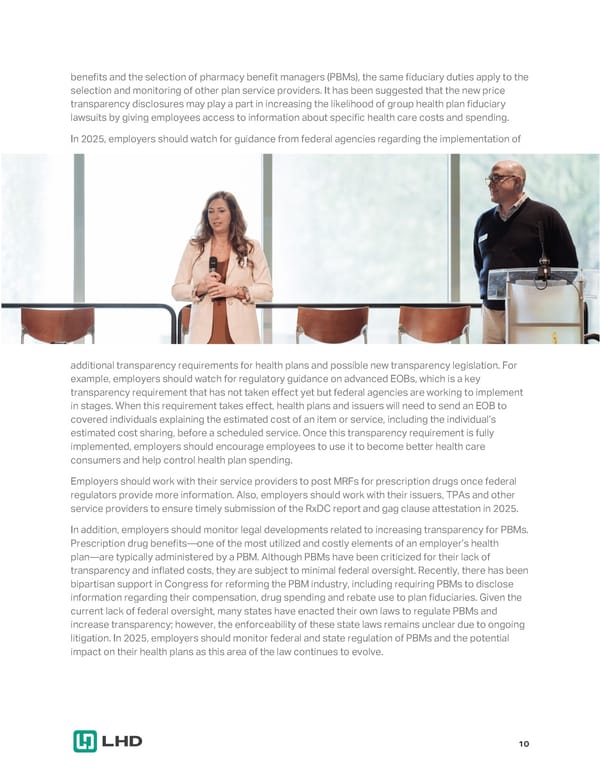benefits and the selection of pharmacy benefit managers (PBMs), the same fiduciary duties apply to the selection and monitoring of other plan service providers. It has been suggested that the new price transparency disclosures may play a part in increasing the likelihood of group health plan fiduciary lawsuits by giving employees access to information about specific health care costs and spending. In 2025, employers should watch for guidance from federal agencies regarding the implementation of additional transparency requirements for health plans and possible new transparency legislation. For example, employers should watch for regulatory guidance on advanced EOBs, which is a key transparency requirement that has not taken effect yet but federal agencies are working to implement in stages. When this requirement takes effect, health plans and issuers will need to send an EOB to covered individuals explaining the estimated cost of an item or service, including the individual’s estimated cost sharing, before a scheduled service. Once this transparency requirement is fully implemented, employers should encourage employees to use it to become better health care consumers and help control health plan spending. Employers should work with their service providers to post MRFs for prescription drugs once federal regulators provide more information. Also, employers should work with their issuers, TPAs and other service providers to ensure timely submission of the RxDC report and gag clause attestation in 2025. In addition, employers should monitor legal developments related to increasing transparency for PBMs. Prescription drug benefits—one of the most utilized and costly elements of an employer’s health plan—are typically administered by a PBM. Although PBMs have been criticized for their lack of transparency and inflated costs, they are subject to minimal federal oversight. Recently, there has been bipartisan support in Congress for reforming the PBM industry, including requiring PBMs to disclose information regarding their compensation, drug spending and rebate use to plan fiduciaries. Given the current lack of federal oversight, many states have enacted their own laws to regulate PBMs and increase transparency; however, the enforceability of these state laws remains unclear due to ongoing litigation. In 2025, employers should monitor federal and state regulation of PBMs and the potential impact on their health plans as this area of the law continues to evolve. 10
 2025 Employee Benefits Market Outlook Page 9 Page 11
2025 Employee Benefits Market Outlook Page 9 Page 11